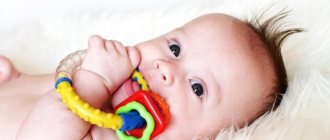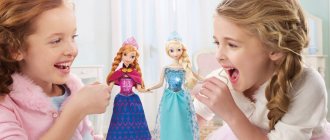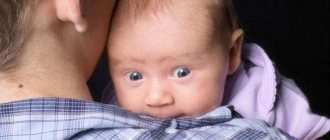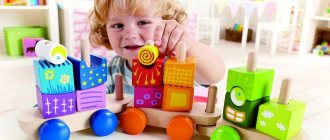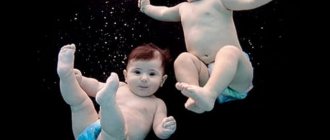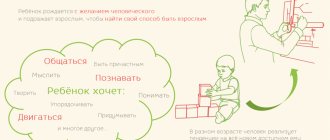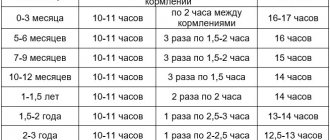Harmful toys: what they contain
Modern children are surrounded by many toys. They are made from different materials: plastic, wood, metal, rubber, soft fibers. All of them should have one thing in common - quality compliance with established requirements. However, some online retailers ignore the rules and purchase entire quantities of uncertified goods, in most cases made in China. As a result, the risk of purchasing a toxic toy that contains unacceptable amounts of dangerous chemicals increases. Eg:
Phthalates
They are used to impart special softness and elasticity to plastic objects. Phthalates penetrate into the children's body through the skin, respiratory system and gastrointestinal tract. They are considered among the most dangerous compounds, as they can disrupt the functioning of the endocrine, genitourinary system, and liver, reduce immunity and cause cancer. It is difficult to detect the presence of phthalates on your own. Their use can be warned by a marking in the form of a triangle of arrows, inside of which is the number 3. In its absence, parents should be alerted to the unusual softness of the toy and strange tactile sensations - when touched, the surface resembles human skin.
Phenol
This substance is also added to plastic or rubber items. Dangerous toys are mainly produced in China, Poland and Belarus. According to Rospotrebnadzor, 40% of items imported from these countries for newborns have an increased concentration of phenol. If the toy you choose has a strong smell, discard it. While playing with it, a child may become irritated to the skin, oral mucosa and respiratory tract. Even a few minutes a day will be enough for the baby to experience dizziness, severe headache, and sudden drowsiness. With prolonged use of toys containing phenol, serious problems with the kidneys and liver are possible.
Formaldehyde
A carcinogenic substance, often leading to cancer, is often present in teething products. When using toys with formaldehyde, adults notice an allergic reaction in children: runny nose, cough, tearfulness, redness of the skin, rash. In addition, the substance negatively affects the nervous and reproductive systems and affects the respiratory system. The presence of formaldehyde can be determined by its strong, unpleasant odor.
Mercury
Its source is batteries, which are often equipped with toys. Symptoms of poisoning include trembling limbs, dizziness, and nausea. Long-term exposure to mercury is life-threatening. It can accumulate in the brain, liver, and kidneys, causing their irreversible changes.
Lead
When buying a toy painted in bright, catchy colors, parents should think about the composition of the dye. Some unscrupulous manufacturers use substances with unacceptable lead content for these purposes. Heavy metal provokes the development of diseases of the blood, brain, kidneys, and destruction of bone tissue. It is impossible to determine the presence of lead in a toy by eye. The only way to protect your child is to buy certified toys from trusted sellers.
In addition to containing chemicals harmful to health, toys can cause injury, damage to the gastrointestinal tract (if swallowed), damage hearing, vision, and even have a negative impact on the psyche. Read our blog article The most necessary toys for 3 years old.
Set for a young nuclear scientist
The 20th century passed with a boom in nuclear physics. The topic of atomic energy so captured the minds that they decided to introduce it, as they say, from a young age. In 1951, AC Gilbert Company launched the U-238 Atomic Energy Lab children's chemistry set, which was a miniature atomic laboratory.
Of course, it was impossible to assemble a nuclear bomb in the basement with its help, but the set of reagents included real uranium-238 - which we know as a source of radiation that is extremely dangerous to health. It is even unnecessary to say that General Leslie Groves, who was in the group of creators of the first atomic bomb, had a hand in creating the toy.
Luckily for '50s kids, Atomic Energy Lab's U-238 was only on the market for a year before it was strictly banned. Now this dangerous toy is being bought by adult collectors - at a price reaching up to 80 thousand dollars.
What dangerous toys are on sale?
The lists of items that cause irreparable harm to a child’s health are updated every year. We have compiled a small overview of the harmful toys that are most often found on the shelves of our stores. The TOP 10 included:
- Constructor made from magnets (neocube). If an ordinary small part swallowed by a child leaves the body naturally, then if magnets get into the gastrointestinal tract, they can only be removed surgically. The fact is that they are attracted to each other, forming a “plug” in the stomach or intestines and causing perforation of their walls.
- Stuffed Toys. Children under one year old, or better yet three years old, should not buy them, no matter how cute they may seem. A funny bunny or bear cub can cause anaphylaxis in a child if they are made from allergenic materials. In addition, these items quickly accumulate dust and become a breeding ground for mites and other harmful microorganisms.
- Weapon. Pneumatic pistols with bullets, darts with sharp tips, crossbows, bows, checkers, sabers are quite dangerous and in inept children's hands can cause serious harm to the health of both themselves and their playmates.
- Toys with propellers. When starting the unit, the child runs the risk of being injured by the propeller, and a suddenly interrupted flight can cause the aircraft to fall on the child’s head.
- Spinners. This fashion fad is not as harmless as it might seem. Poor quality models, with bearings flying out or a rotating part detaching at the wrong moment, have caused numerous childhood injuries.
- Set for a young chemist. Many children love to conduct experiments, but you should not risk their health. After all, a child can taste the chemical or burn his skin by accidentally spilling the reagent on himself.
- Aqua soil (hydrogel balls). They are often used for the early development of children, training fine motor skills. When they absorb water, they can sharply increase in size, and the same thing happens to them in the baby’s stomach if he swallows them. This substance can cause intestinal obstruction or perforation within a couple of hours.
- Musical instruments. When purchasing pipes, whistles, and tweeters, you must pay attention to the permissible volume threshold of 65 decibels, otherwise the child’s hearing may be damaged.
- Doctor's kit. Medical instruments can be used by children to “examine” not only toy patients, but also their friends. During procedures, small objects often get stuck in the ear, nose, and respiratory tract. In addition, these kits fuel premature interest in real tablets, syringes, and scissors.
- Monster dolls. Surrounding a child with monsters or zombies can not only instill fear in him, but also cause serious harm to the psyche.
Children's glassblowing workshop
The same AC Gilbert Company, whose management did not seem to have common sense, released another dangerous toy for sale. It was called “Young Glass Blower's Kit,” and it also horrified quite a few parents.
The set included all the necessary tools for blowing glass figures, but most importantly, a gas burner that heated to the required 540 degrees Celsius. Need I say how many American families had to call the fire department?
Of course, no personal protective equipment was included with the kit—only a thin brochure with instructions. This set, fortunately for the parents, also did not remain on sale for long.
How to choose a safe toy
Knowing which toys can be harmful to a little person, parents can “filter” the items. However, in order to protect your baby as much as possible, you need to buy the product you like carefully, following a few simple rules. We recommend:
- check the availability of a quality certificate;
- purchase goods in specialized stores;
- take into account the age of the child;
- give preference to toys made from natural, safe materials: wood, fabric, food-grade plastic;
- evaluate appearance (no nicks, cracks, loose seams, peeling paint, dried adhesive, or stained surface);
- refuse to purchase if there is a chemical smell, loose parts or toxic coloring;
- pay attention to the markings, taking into account that safe items have the “PVC free”, “BPA free”, “CE” symbols.
When purchasing children's products online, read reviews from parents on forums and go to the seller's official website to find out its history. We hope that our recommendations will help you avoid the troubles that come with harmful toys.
Additionally, you can read the article on the topic “The role and importance of toys in the lives of children.”
Non-educational toys
There is another danger: a toy is bought, money is given for it, but there is no use for it. Because you can only look at it or listen to it, but there is zero development.
Interactive dolls
The same dolls that drink, immediately pee, cry, talk and call their mother, it turns out, do not develop children's imagination. Of course, there is no need to imagine here - the doll can do everything.
Conclusion: it is better to give preference to dolls that cannot do anything, instead of which the children themselves will have to speak and work.
Press the button and you will get the result
These are the same super-expensive locomotives that travel on their own, blow smoke, hum, puff and, again, do not develop the child at all. What remains in the game for the baby? Press the button and watch. It’s much more interesting to design a steam locomotive yourself, assemble the cars, couple them, drive them yourself, make sounds! By the way, the price is much more attractive! And this applies not only to steam locomotives, but also to various push-button development devices and gadgets.
Conclusion: expensive does not mean good. Before buying a toy, think about how much imagination your child will put into it.
So, fashionable, bright, beautiful - these are not the most important aspects of choosing toys for a child. It is important to put safety first, development second, and then the toy will only bring benefit and joy.
- share with your friends!
Plastic melting kit
“Creepy Caterpillars” was the name of this set, another “hot” toy. True, it’s not as fire hazardous as the previous one, but it will happily “fry” children’s fingers.
The set included molds in the shape of various insects, bottles with liquid plastic and a real small oven for baking it at a temperature of 150 degrees. Need I say that the children did not follow any safety precautions?
This is not to mention the toxic plastic fumes that children inhaled. After a wave of admissions to burn departments with “baked” fingers, the toy was successfully banned.
Carbide gun
What do you know about life if you haven't blown up carbide? Many former Soviet boys can tell a lot of creepy stories about friends for whom this cost dearly. But in the USA in the 40s, the Austin company thought of launching a carbide-based pistol on the market.
The Austin Magic Pistol included carbide and shooting balls. The shootout was conducted as follows: carbide was poured into the rear compartment of the pistol, then a few drops of water were added there (it was enough to just spit). Cotton, flash, pediatric traumatology.
After several accidents, the toy was banned. I wonder if American oldies remember her with the same nostalgia?

